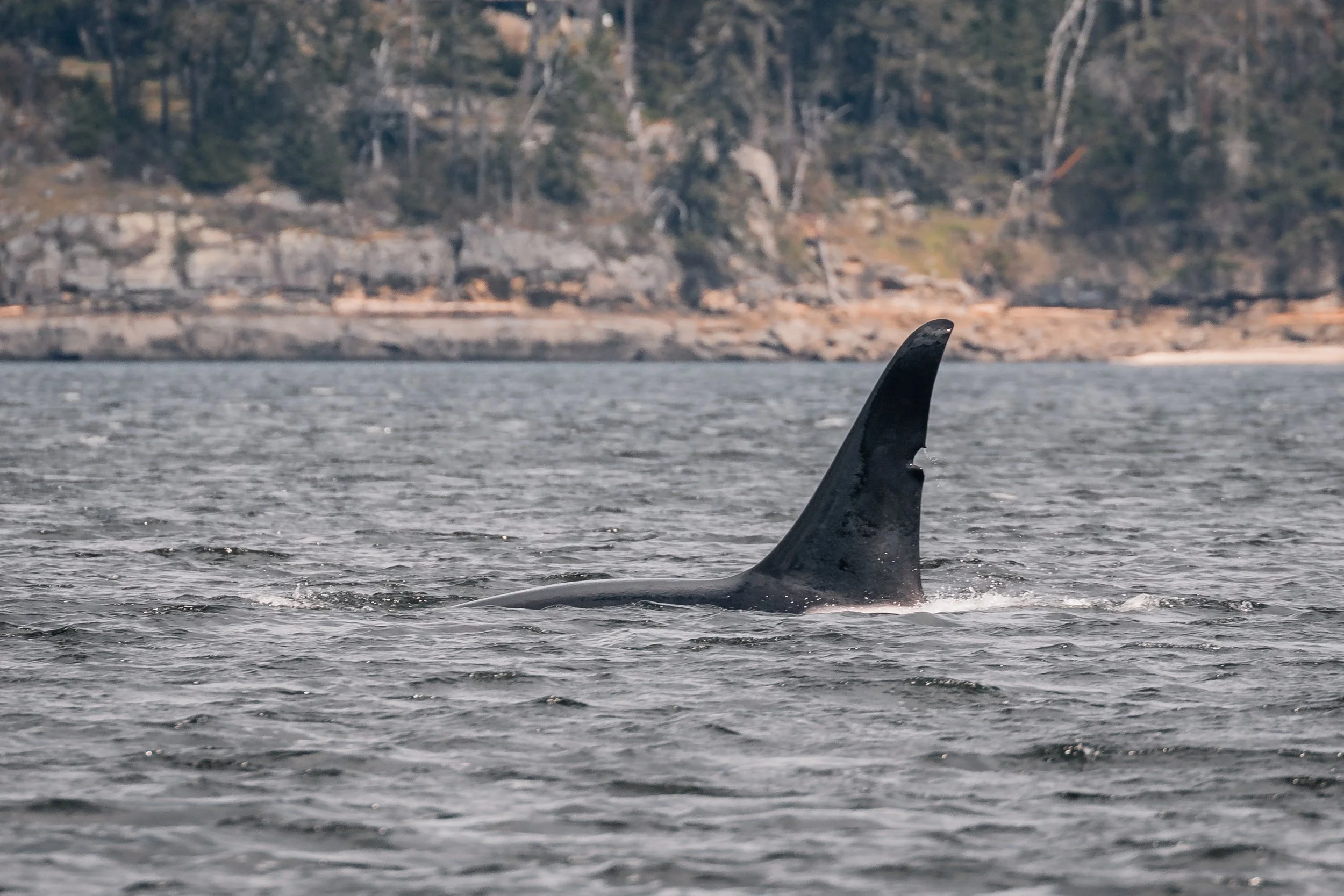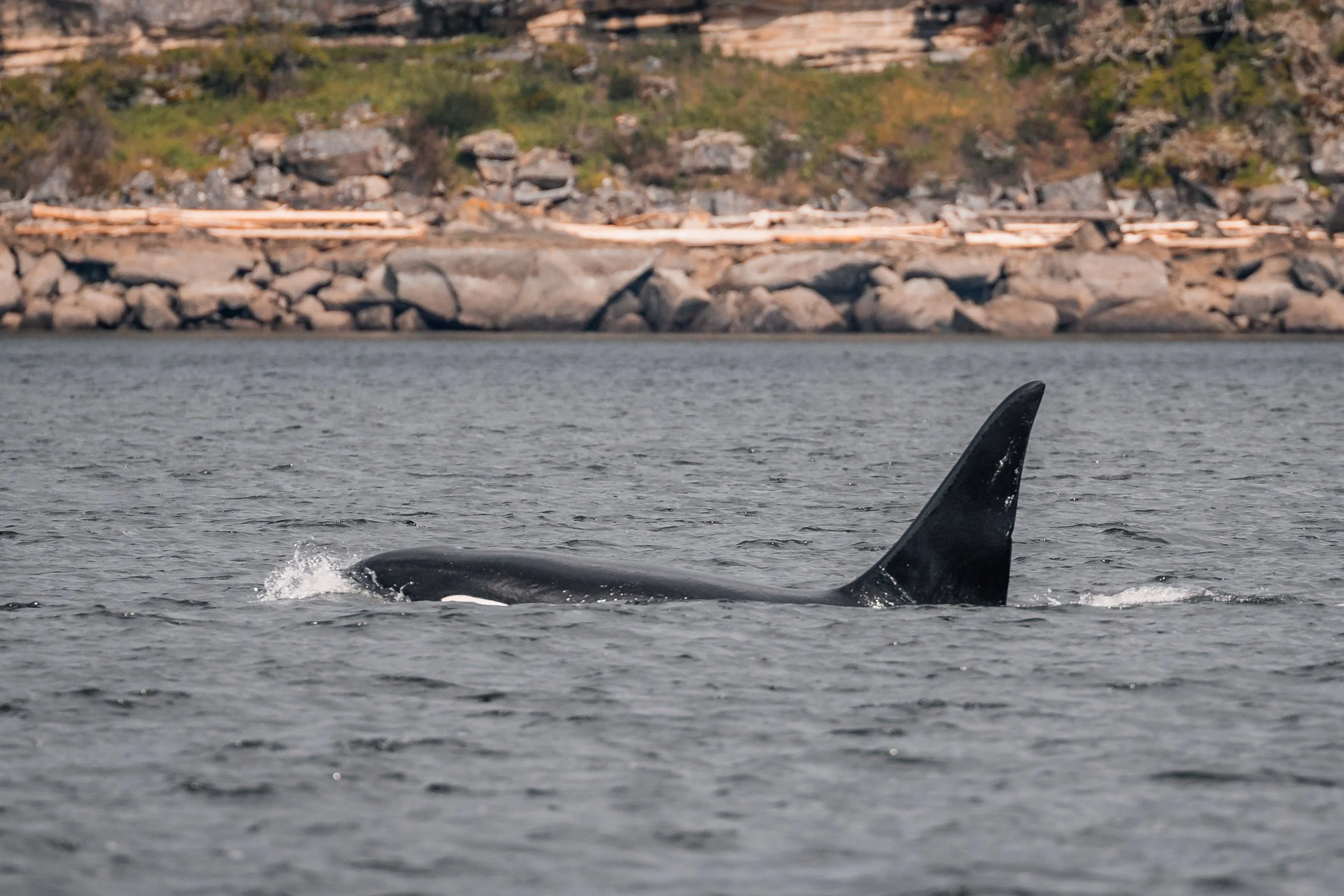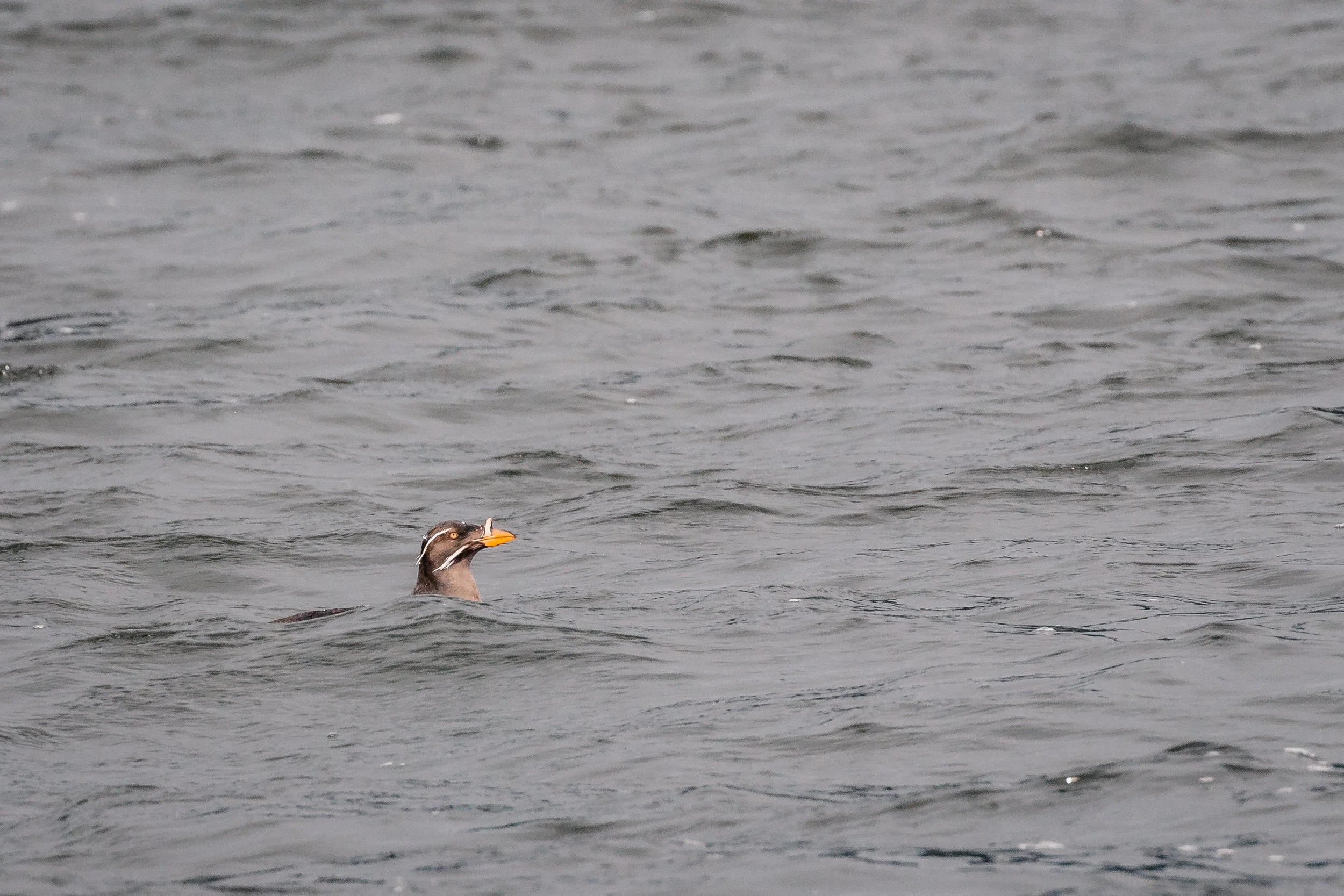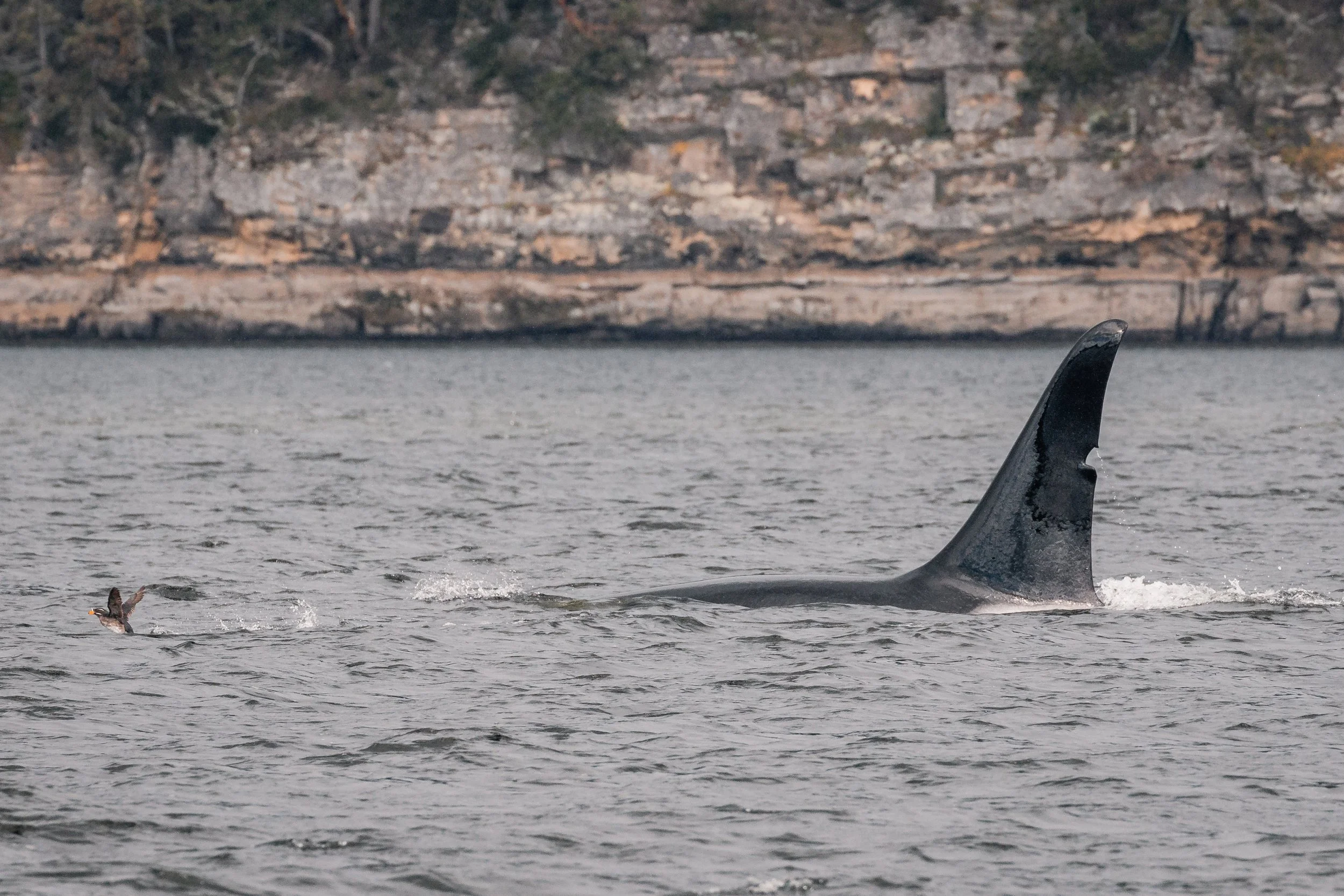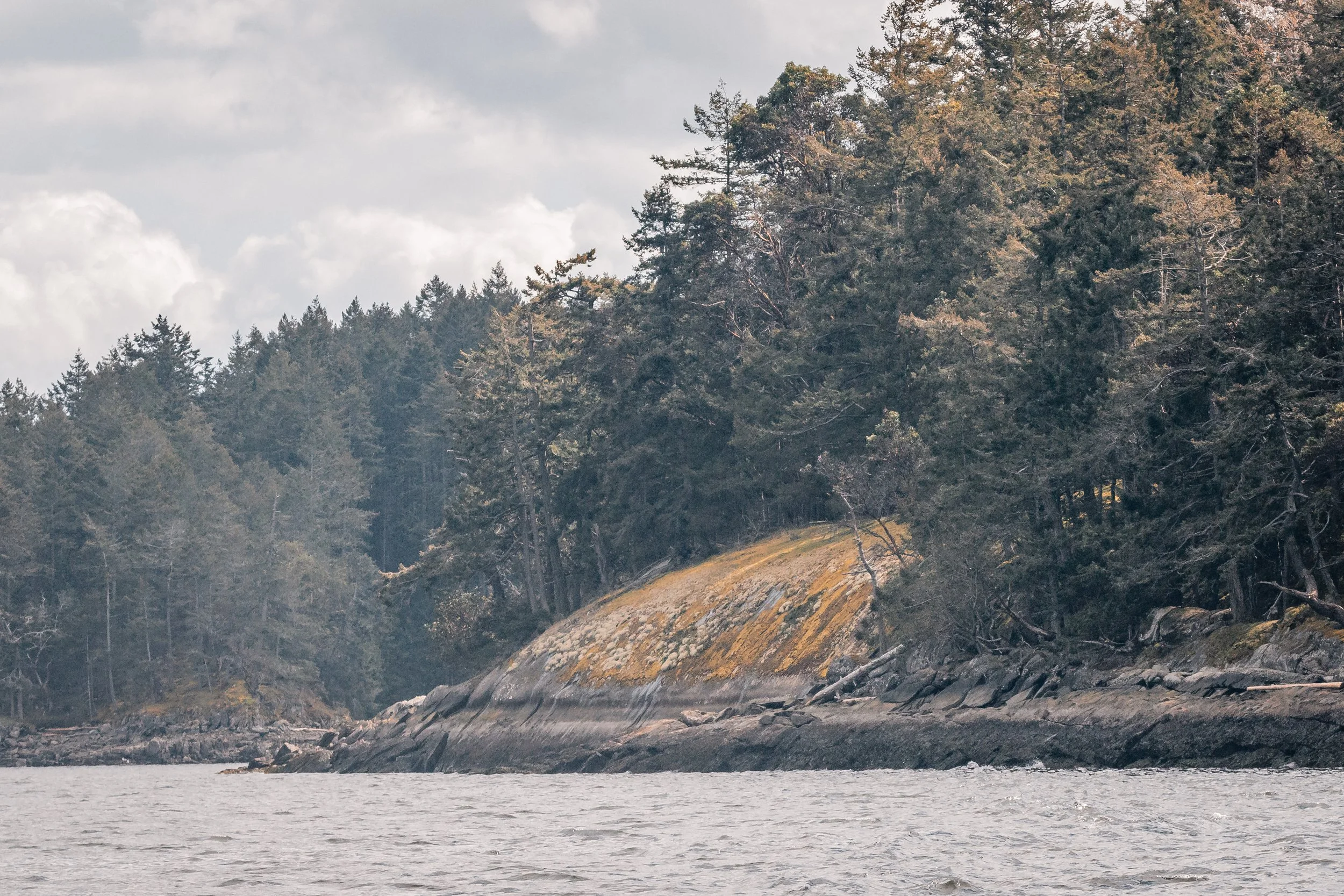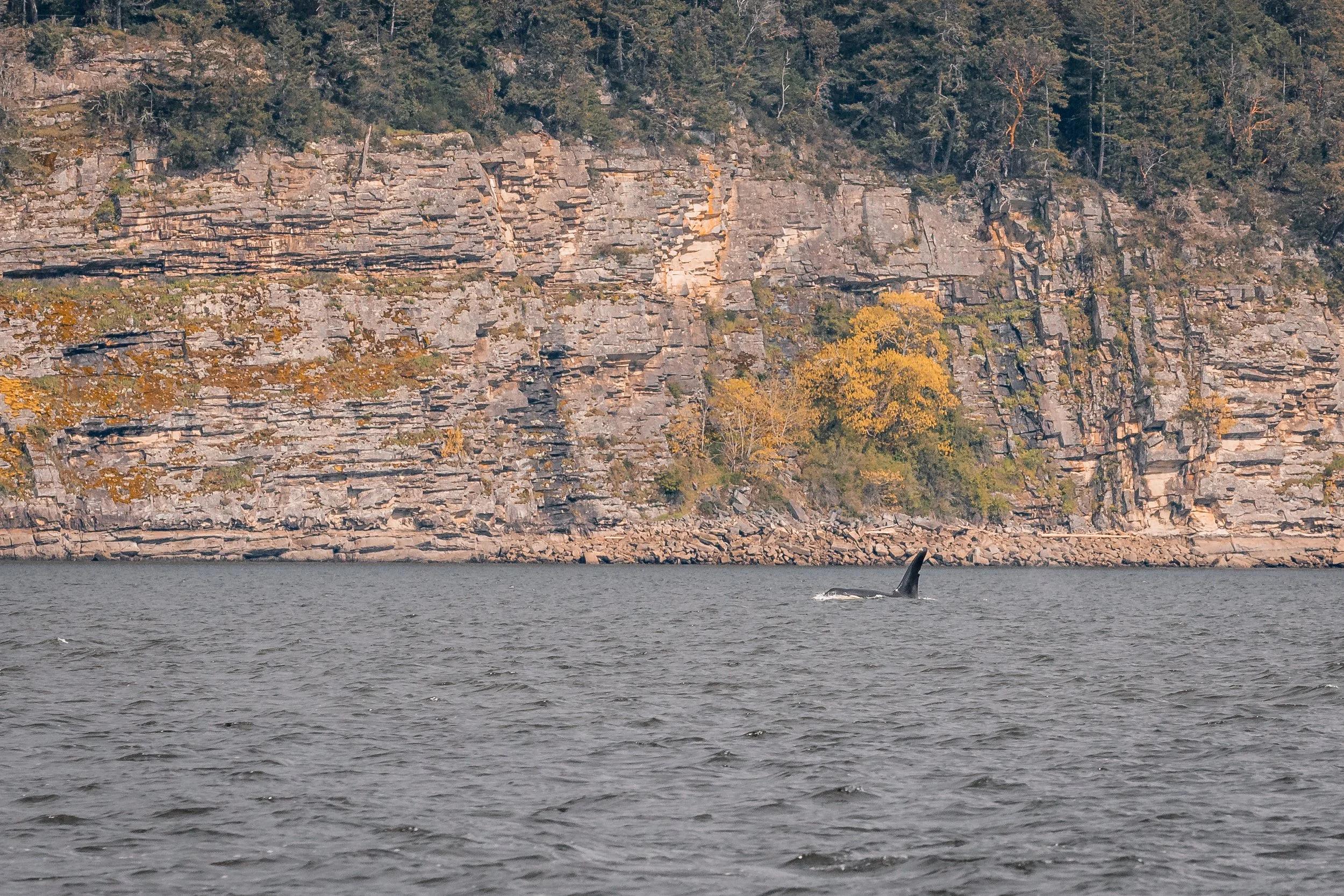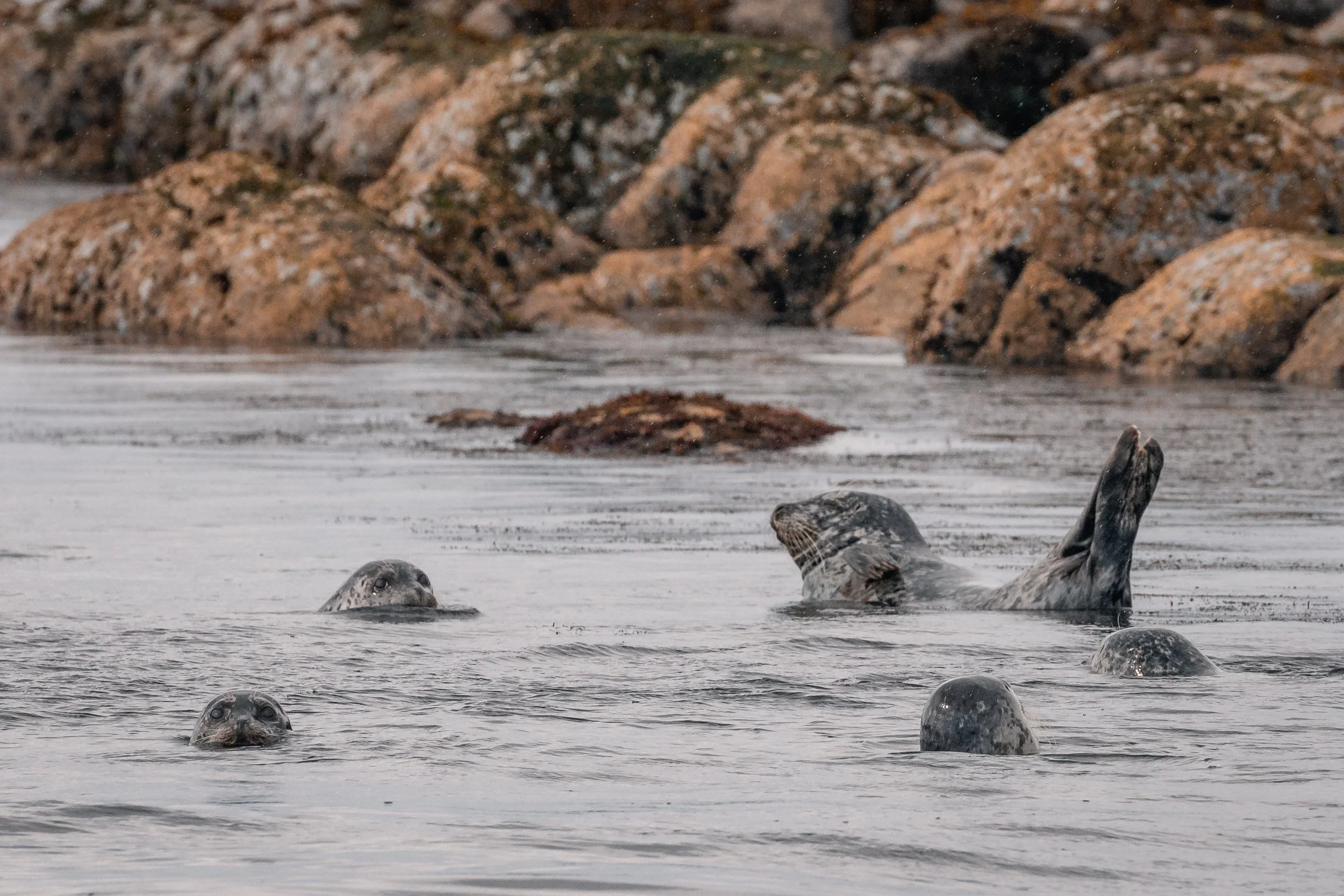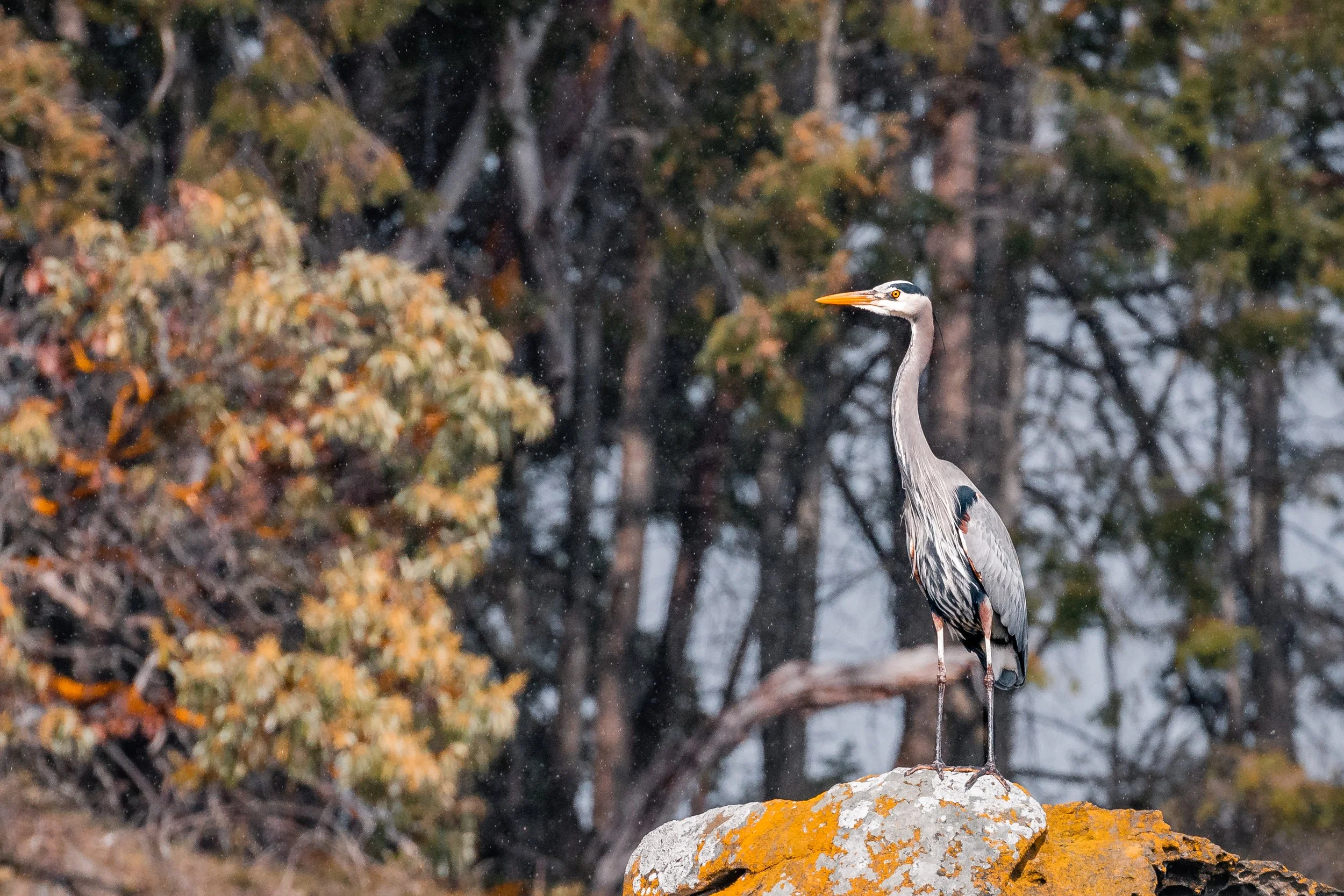April 5, 2022 - The Alaska Boys
Mammal hunting Orca go by a few different names. The most common is Transient Orca because they don’t exactly have a home territory or a predictable migration pattern. They wonder the coast lines from Alaska to California, stopping where they please and venturing where they want.
The other name they go by is Bigg’s Orca named so for Michael Biggs, an Orca researcher who developed the identification methods we use today and was a major contributor to Bigg’s Orca research on the west coast.
During our trip today we hung out with 2 whales who really embraced the Transient part of their name. T128, Flotsam, and T125A, Jetsam, were circling the waters off the East coast of Saltspring Island. These 2 large boys spend most of their time up in Alaska and are a rare treat to see down in our waters.
What’s in a name?
When it comes to naming Orcas they all have 2 names, their scientific number which helps us track their maternal lineage, and their nickname that makes them a bit more relatable. Calling a whale T125A doesn’t sound quiet as nice as Jetsam. Jetsam and Flotsom are both named after Ursula’s eels in The little mermaid. While their nicknames are cute and often have stories behind them the scientific names are very important. Those numbers and letters tell us a lot about a whale. For instance T125A (Jetsam) was thought to be the first born to T125 who is at least 43 years old. She doesn’t have a fun nickname - yet!
Now assigning whales their number might seem easy, first born is “A”, second born is “B” and so on. Once the lettered individuals grow up, if they are female and have their on calves, the system switches back to numbers. Take for instance T049A - Nan. We travel with Nan often and see her on a lot of our trips. Her first daughter is actually her 5th calf, T049A5 Nebula. When Nebula grows up she will eventually have her own calves and her first born will be T49A51. That’s a big mouthful, which is why nicknames become so important.
Now things become even more interesting when you look at older whales, who were born before the 1970’s. Because Orca research really only began in the 70’s any whales born earlier received approximate ages, and whoever was traveling consistently with and older female was assumed to be their offspring.
Jetsam was seen traveling with T125 after his birth and so was assumed to be her first born, but since those days Jetsam has separated from his mom to travel with another older male, Flotsam. Flotsam goes by the number T128, because he was first documented alone but after joining up with Jetsam and traveling with him it’s become apparent that these 2 might actually be brothers. We also know Flotsam was born around 1988, which would make him T125A technically, right? If only it was that easy. Since Flotsam and Jetsam travel away from mom another male has become her travel companion, T127 who was born sometime around 1984.
After watching these whales and learning about them over the years we are pretty confident that T127 Is likely T125’s first born, with Flotsam being her second born and Jetsam actually being her third born.
Mix ups like this are pretty common with older whales, or whales that are not seen often. For instance
T028 Khaz is the suspected mom of T146 Oamaru. T036 Flapjack, another whale we spend a lot of time with, is the suspected mom of T137 - Loon (making her T137A Jack’s grandmother!) and T099 Bella.
There are many cases of this throughout our transient population and it’s always fascinating to learn who is related to who, however it’s important to remember that most of these connections are just speculation. We don’t genetically test our whales, so while it’s likely that they are related, in some cases it could be that they are just good friends and spend enough time together that everyone thinks they’re related.
Below are some photos of Flotsam and Jetsam taken by marine naturalist Rebecca Stirling.
T125A Jetsam.
T128 Flotsam.
A Rhinoceros auklet! Check out that “horn”.
Rhinoceros auklet.
Jetsam chasing a Rhinoceros auklet!
T125A Jetsam.
Jetsam along the rocky cliffs.
Harbour Seals!
Great blue heron.
Low tide means sea stars! These are leather stars.
Great blue heron.
Canada Goose Yoga.
California Sea Lions yelling for space!
We saw this rainbow along the waters surfacing while we were travelling back from the whales.
California Sea Lions.
California Sea Lion.

